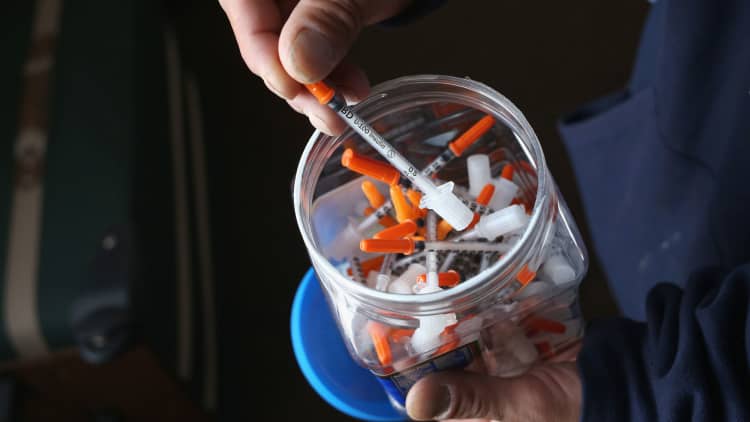
The goal of an opioid is to reduce pain, but the addictive drugs are creating pain for millions of families suffering through the crisis.
Deaths from opioid overdoses number at least 42,000 a year in the U.S., according to the Center for Disease Control.
"This is an epidemic that's been getting worse over 10 to 20 years," Caleb Alexander, co-director of Johns Hopkins Center for Drug Safety, told CNBC's "On The Money" in a recent interview.
"I think it's important that we have realistic expectations about the amount of work that it will take and the amount of coordination to turn this steamship around," Alexander added.
President Donald Trump declared the opioid epidemic a public health emergency last fall, and he announced an initiative in March to confront the national health crisis.
"No doubt there's a lot of efforts underway at every level to address the epidemic," Alexander explained.
"There's a flurry of legislation right now working its way through Congress and these legislative efforts address everything from safer packaging to better use of information to try to address the diversion of prescription opioids."
Opioids include not just prescription drugs, like OxyContin, codeine, and morphine, but also heroin and synthetic drugs like fentanyl.
But Alexander says some progress has been made in reducing the overprescribing of the prescription painkillers, "this was one of the primary drivers of the epidemic in the first place."
"There's been modest declines in prescription opioid sales over the past 5 to 7 years. But we're still way beyond the volume of opioids prescribed compared with every other country in the world. We have a long way to go before we get to the levels of opioid prescribing that we were at in the late 1990's before this epidemic began."
Alexander says his research is focused on identifying clinical and policy solutions to the opioid epidemic.
Beyond reducing opioid prescriptions, he sees another step as crucial in addressing the epidemic.
"We need to better identify and treat people with opioid addiction. This is a treatable condition, just like diabetes or high cholesterol and yet the vast majority of people with opioid use disorder are not enrolled and seeking care."
Alexander added: "The statistics are stunning. More than 2.1 million Americans have an opioid use disorder or opioid addiction" and he says the country needs to "invest tens of billions or hundreds of billions of dollars" to shore up the treatment system.
He said patients should be able to access medications that "we know work to help reduce the cravings for further opioids."
With treatment, Alexander said "they can return to normal healthy productive lives in recovery."
On the Money airs on CNBC Saturday at 5:30 am ET, or check listings for air times in local markets.



